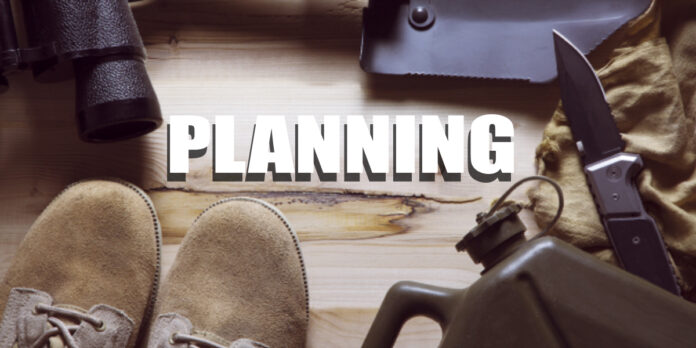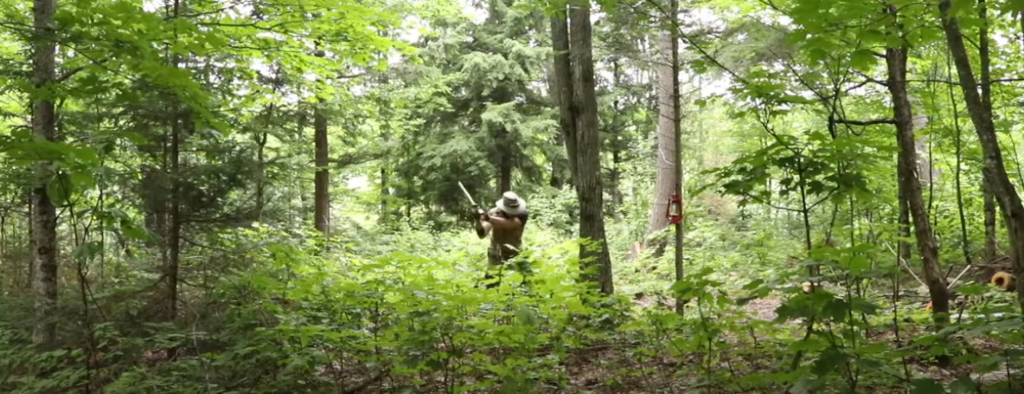
We’ve probably all heard that “Proper planning prevents piss-poor performance.” It’s true, to a certain extent, but planning is just the beginning. It won’t get you fare without training, practice, and execution. At some point in your prepper journey, you need to go beyond planning and build some skills.
We preppers plan a great deal. We plan what to do for any one of a dozen emergency scenarios. For example, we plan how to get our kids home from school if there is an emergency. We plan how to get home from work if the cars stop running because of a solar flare or an EMP. Our families know where to get water if the faucets run dry, because we planned for that. And they know what to do if an earthquake strikes.
We pack a bugout bag and plan when to bug out, but have we ever practiced bugging out? Try it: Tell your family you have 10 minutes to bug out. See if you can load the car and be on the road in less than 10 minutes. Then drive to your bug out location and spend the night there. How did it go? Did you forget something?
Wait a month, then do it again. Hopefully, your loading will be faster and fewer things will be forgotten. This time, pretend that the interstate is closed and the GPS system is down. Do you know how to gt there via back roads?
Do a Walk Through
Even if you cannot practice bugging out, you can walk through it or do a dry tun. In fact, many plans can be tested with a walk through. For a walk through, you take your plan and execute it slowly and carefully, one step at a time, evaluating each step, looking for areas that don’t work, don’t make sense, are confusing, or could be done better. After the walk through, you revise the plan.
Unfortunately, walk throughs don’t work for items that require skill. For example, If you plan calls for you to cut down a tree to block the road to your retreat, you better have a chain saw and know how to cut down a tree. You can’t really “walk through” the tree felling, but you can practice felling a tree somewhere else, and that’s where practice is useful.
Practice Makes Perfect
Another example of practice helping: the first time I backed up a trailer, my wife could not give me proper directions and we had a hard time communicating effectively. She failed to understand that there is a delay between when I turned the truck and when the trailer responds so I have to initiate the move early. She didn’t know that a vehicle with a trailer cannot turn in as tight a radius as the vehicle can alone because of the danger of jack-knifing.
I remember practicing out on the street so that if we got stuck, we could go forward, pull around the block, and try again. We needed the practice, but after a few tries, we got the hang of it. After some real-world experience, she understood where to stand, when to switch sides, and our communication improved even further. We can now back the trailer into tight spaces or down narrow driveways.
Practice builds experience which contributes to success. If you expect to grow a garden after TEOTWAWKI, then you better get some practice now. Do you know if those seeds will grow in your climate? Have you fenced the garden to keep deer, rabbits and other vermin out? Have you improved your soil? Do you know how to make sure your squash don’t cross-pollinate, so you can save the seeds that will grow true? Better to make mistakes that harm the harvest now, while you can still run out to the store, than late when you need every calorie. Likewise, better figure out how to make the chicken coop predator-proof while there are still companies out there who can mail you new chicks. A single night of successful predation can kill dozens of chickens.
Training Matters, Too
Before you can practice, you have to be trained so that you can practice doing something correctly.
I remember teaching my daughter to shoot a Ruger 10/22. Her shots were consistently high. After talking things out, we eventually, we had a big “Ah ha!” moment. You see, the 10/22 comes with a rear sight that is a V with a notch and you are supposed to line the round front sight up so it fills up the notch. She had previously learned to hold a sight picture while using a pistol, so she lined the front sight of her rifle up with the top of the ear on the rear right (the red dot in the image). No wonder her aim was off! If we had never practiced with that rifle, she would never have known. Practice, or at least familiarization training, is required to avoid mistakes like this.

If you have to watch a YouTube video each time you disassemble your gun, clean it, and reassemble it, then you need more training. If you cannot load, rack the slide, and shoot your pistol using only your non-dominant hand, then you need more training.
When the horde is marching up the road with pitchforks and torches, it’s too late to teach your spouse or your kid how to load, cock, fire and reload an AR-15. When blood is spurting out of your leg wound, it’s too late to tell them how to apply the tourniquet. They need to have this training before they need the skill.
Theory vs Experience
You can learn from books and videos, but you learn theory, not hand-on skills. You can understand how something is accomplished, and you can watch someone else accomplish it, but that doesn’t mean you can do it.
For example, I watched a great series of YouTube videos about a fellow who built a log cabin and then furnished it with little more than manual hand tools. The videos were quite enjoyable. I’ve also watched reality TV shows where people in Alaska build cabins. I believe I understand the theory of building a cabin quite well. But let’s face it, I have no experience doing so, and certainly not with an ax and a hand saw.

Who would you rather have helping you build your wilderness cabin, a guy who grew up helping his dad build cabins and then built two of his own, or a guy who watched a bunch of videos? So why would you want to go into a survival situation after watching reading a library of books and watching hours of videos, but never puttying that theory to the test? If you are that guy with theory, book learning and YouTube viewing experience, consider getting some hands-on experience to flesh out all that theory.
Here are a few ways to move beyond theory:
Get a Job that Gives you Training
If you are young, join the Army or Marines. Go through the police, fire or EMS academy and work for them. Work for a farmer or market gardener. Become an apprentice and learn the building trades. Go to nursing school or medical school and work as a nurse, nurse practitioner, PA, or MD. Many other jobs can give you skills and habits that will be beneficial when the time comes to put your preps to work.
Go to School or Take a Class
Consider going to your state’s agricultural college and learning farming, animal husbandry, becoming a veterinary technician, studying forestry, becoming a botanist, etc. Take the EMT class and work as an EMT, continue beyond basic and get your advanced and Paramedic training. Get firearms instruction from a certified instructor. See what your community college offers in terms of skill-building classes. (A rare few offer gun smithing.) Check out the county extension office who may have classes for canning, pickling and other home economics-related skills as well as offering a master gardener program. See if local nonprofits (like the Red Cross, 4H or Future Farmers of America) offer courses; if you are too old for a youth-oriented program, you can still volunteer to assist. Look for retailers that offer training, like a basic sewing or quilting course at the swing store or a class on pruning fruit trees at the nursery.
Join a Local Club
Many clubs or associations offer classes, seminars, conferences and other educational opportunities. This can include a gardening club, a HAM radio club, a gun club, a fishing club, etc. Many oldsters who’ve been in these clubs for years will relish passing on their skills and helping someone just getting started.
Volunteer
Many organizations will take unskilled people as volunteers and teach them some skills as they progress. Other skills will be absorbed by doing the volunteer labor. For example, you could volunteer at a local community garden or an animal shelter. You could volunteer at a soup kitchen and learn to prepare meals.
Just do it
Maybe you’ve read the book and watched the video, now bite the bullet and get out there and do it. Yes, it helps to learn to paddle the canoe from someone sitting in the back with experience, but it’s not a requirement. Like Bruce Springsteen said in No Surrender, “We learned more from a three-minute record baby, than we ever learned in school.” You don’t have to build a cabin in the woods, but you could build a shed, construct a green house, or another small project.
Don’t Neglect the Next Step
Don’t stop planning, but don’t neglect to take the next step. Go beyond planning, build your skills, practice them, get some experience, and make that planning really pay off!
See all our prepping related articles or read more about the layered approach to prepping.






